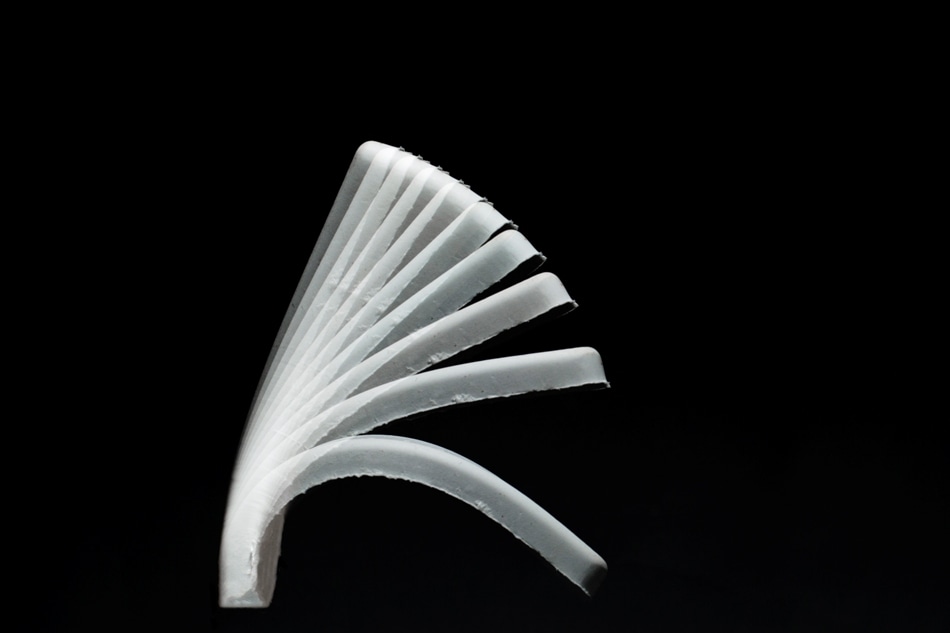May 3 2017
 A time-lapse of one of the aerogels flexing from a held-closed position back to its original straight shape. (Photo by Sam O'Keefe/Missouri S&T.)Polymeric aerogels are nanoporous structures that combine a few highly desirable properties of materials, such as mechanical and strength flexibility. It is virtually impossible to optimize a substance thought to be the final frontier in lightweight materials. But chemists from Missouri University of Science and Technology have proved that it is possible. They created aerogels that have rubber-like elasticity and can “remember” their former shapes.
A time-lapse of one of the aerogels flexing from a held-closed position back to its original straight shape. (Photo by Sam O'Keefe/Missouri S&T.)Polymeric aerogels are nanoporous structures that combine a few highly desirable properties of materials, such as mechanical and strength flexibility. It is virtually impossible to optimize a substance thought to be the final frontier in lightweight materials. But chemists from Missouri University of Science and Technology have proved that it is possible. They created aerogels that have rubber-like elasticity and can “remember” their former shapes.
Aerogels are formed by substituting liquids with gases in a silica, polymer or metal oxide gel. They are used in numerous products such as NASA space missions and insulation of offshore oil pipelines.
The specific kind of polyurethane aerogels we have created are superelastic, meaning that they can be bent in any direction or be smashed flat and still return to their original shape. Our superelastic aerogels are different from rubber in that they can on-command return to a specific form. That is, they also show a strong shape memory effect, meaning that they can be deformed and cooled and keep the deformed shape forever. However, when the temperature rises back to room temperature, they recover their original un-deformed shape. The shape memory effect is not new. Shape memory metallic alloys and polymers are known for many years, however, shape memory aerogels are the last frontier in lightweight.
Dr. Nicholas Leventis, Curators’ Distinguished Professor of Chemistry, Missouri S&T
Leventis and his team have shown this unique attribute by shaping a “bionic hand” that is capable of imitating coordinated muscle functions. The aerogel hand is designed to clasp a pencil and, when stimulated, can clasp a pencil from its stretched open-palm shape.
We believe this work has produced one of the ‘holy grails’ in the field of aerogels. I see a lot of biomimetic applications for these aerogels in the future. Their flexibility, combined with elasticity, greatly enhance the range of possible uses.
Dr. Nicholas Leventis, Curators’ Distinguished Professor of Chemistry, Missouri S&T
Leventis and his team’s research is reported in the Chemistry of Materials journal published on May 2, by the American Chemical Society. Working with Leventis at S&T are Dr. Chariklia Sotiriou-Leventis, professor of chemistry, and graduate students Suraj Donthula, Chandana Mandal, and Adnan Malik Saeed, and summer interns Theodora Leventis and James Schisler. The research received support from the U.S. Army Research Office, and partial support from BASF Polyurethanes GmbH.